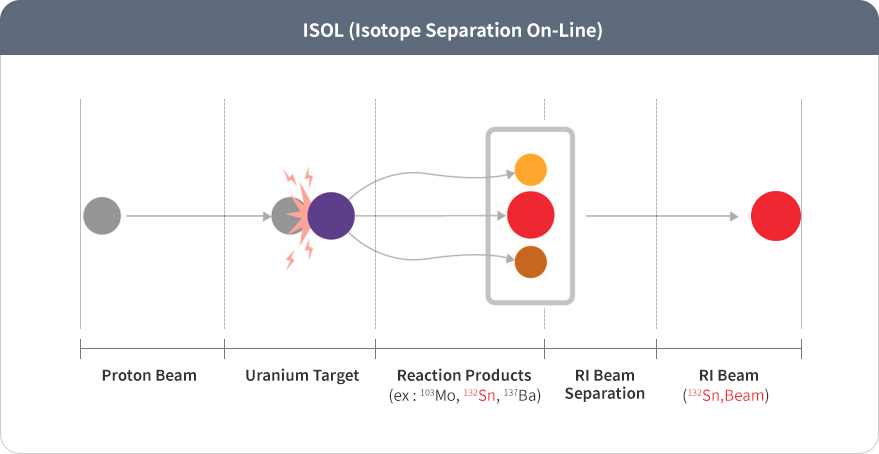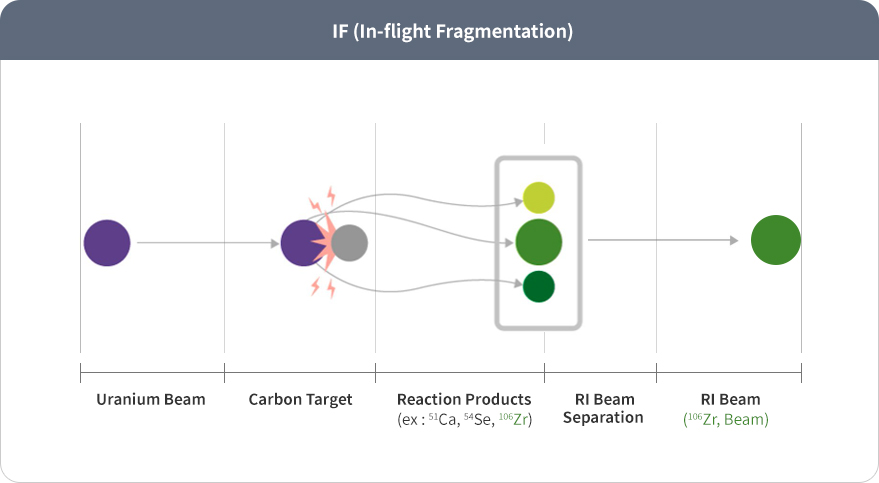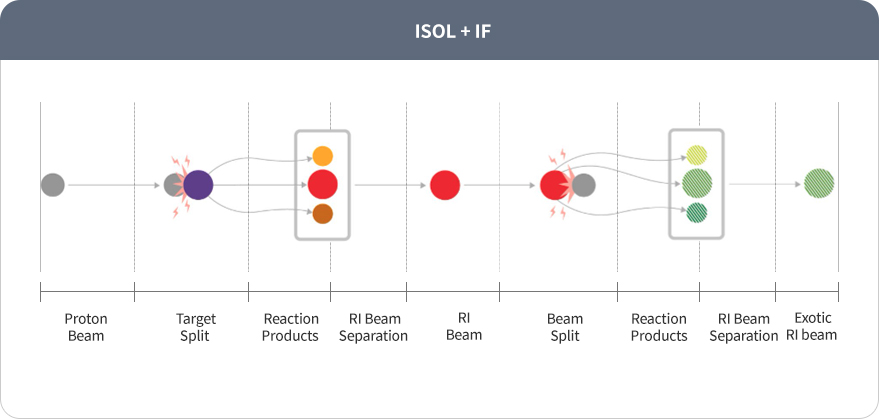The two methods of producing rare isotopes with existing accelerators are Isotope Separation On-Line (ISOL) and In-flight Fragmentation (IF).
Accelerated light atomic ions are collided with heavy element target, and rare isotopes are extracted from the fragmentation of the target. This method produces a large abundance of rare isotopes, and the material obtained from repeated extractions has a high purity.

Accelerated heavy ions are collided with a light element target, and then rare isotopes of interest are extracted from many kinds of very fast moving fragmented heavy ion beams via a rapid separation of very short lived rare isotopes using strong magnets.

While accelerators around the world rely on either ISOL or IF, RAON will be the first kind of facility having ISOL and IF method combined in addition to each ISOL and IF method available. After producing rare isotopes with ISOL, RAON again accelerates them with IF. This creates the possibility of discovering new and rare isotopes. RAON is expected to increase the rate of discovery of rare isotopes, whilst producing them in larger quantities and in greater variety.
